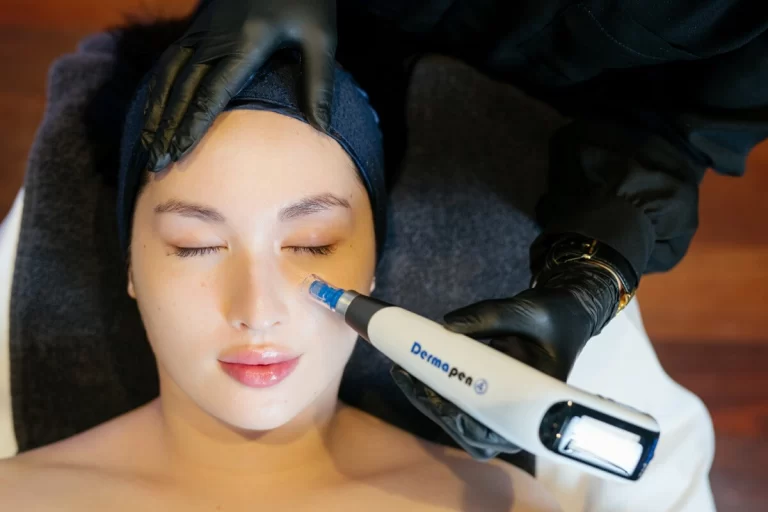10 Myths of Anti-wrinkle Treatments

Despite being some of the most popular medical and cosmetic procedures in recent years there are still many misconceptions and myths surrounding cosmetic injectables (such as wrinkle relaxer injections and dermal fillers).
With the internet and social media consuming our day to day lives and supposedly accurate information available to us at the click of a button it is easy to research our questions. However it is just as easy to be inundated with incorrect and misleading information. Hello fake news!
I have collated (through individual patient enquiries and my own experiences as a cosmetic doctor) the most common myths and misconceptions surrounding cosmetic injectables.
I will focus on wrinkle relaxing injections over fillers and other injectables. But if anyone would like me to address myths surrounding dermal fillers or other procedures just let me know!
I hope you find it both informative and entertaining. Happy reading
Dr Kate
X
1) Wrinkle relaxers can only be used when lines appear
Wrinkle relaxers are one of the most effective ‘preventative treatments’ in regards to premature ageing. By waiting until wrinkles are permanent and ‘static’ at rest makes them much more difficult to treat. This requires higher volumes of product and more treatments required to obtain the desired result.
By treating dynamic lines and using anti-wrinkle injections as a preventative treatment these static lines do not form and the patient will begin to make less facial expressions that exacerbate their lines.
With ongoing treatment less product is needed with a longer duration between treatments and as time goes on less wrinkles will be able to form.
2) If you stop having treatments you will look worse than you did before
I’ve never understood this one!
With ongoing use of wrinkle relaxers muscles will slowly decrease in size and ‘atrophy’ with lack of contraction. However as the treatment is only temporary (3-4 months) eventually full muscle activity will return causing dynamic lines and hyper activity of the muscle and you will be back to baseline. The wrinkles and facial movements will never be worse than before you had the treatments! This is impossible.
I often use the anaology of training at the gym. If you stop lifting weights eventually your muscles become smaller, once training is resumed it takes a long time for the muscles to rebuild to the size they were before. Much like relaxing a muscle with neurotoxins.
It is important that wrinkle relaxing injections are not permanent and diligent follow-up and review is required. Remember of course that the ageing process does not simply STOP because you are getting treatments and ongoing smoking, poor diet, poor skin care will also contribute to this process.
3) Wrinkle relaxer injections are just for wrinkles
‘Wrinkle relaxers’ as they are commonly referred to (due to strict Australian advertising laws) are used in many medical procedures, not just cosmetic. Anti-wrinkle injections are used for medical conditions such as strabismus (cross eye) and blepharospasm (uncontrollable blinking) of the eyes prior to the discovery that it relaxed wrinkles!
It’s use in medicine has grown in recent decades. We now treat conditions such as cerebral palsy, cervical dystonia, overactive bladder, migraines, hyperhidrosis, bruxism and many more!
The medical and cosmetic indications are endless. Not only that but a proven safety record of over 20 years of medical use makes anti-wrinkle injections one of safest and efficacious medications in existence.
4) Wrinkle relaxers can be toxic and give me botulism
Wrinkle relaxers are derived from clostridium botulinum which is a bacteria that causes a type of food poisoning (botulism).
However it is not possible for neurotoxins to cause systemic effects. When injected into the muscle or subcutaneously the toxin stays at the injection site only affecting the nerve transmission from the nerves to the muscle fibres in that isolated area. This is why injecting the forehead for example does not cause relaxation of other muscles. This is dose dependent of course as larger and incorrectly placed injections can cause spread into other muscles.
Spread into the blood stream with resultant medical consequences will require massive doses.
However, that being said anti-wrinkle injections brands are still a prescription medication and must be administered by a trained, registered and insured medical professional.
5) Wrinkle relaxers are addictive
For this ‘myth’ I would say yes and no.
I hear so many patients express their concerns that they may become addicted to the treatments and that once they start they won’t be able to stop. People simply become ‘addicted’ to feeling beautiful and confident in their appearance following these treatments.
Although wrinkle relaxers are a prescription medication there is no risk of physiological dependence or the need for increased doses as treatments continue over time. Like I mentioned before, your appearance will not get worse with cessation of the treatments (of course the ageing process will continue however).
I have noted that the more aesthetic treatments a person gets the more in tune they become to their appearance (and perceived flaws) so this can result in more treatments over time.
6) Wrinkle relaxers can cause damage to my muscles and tissues
I have had a few questions recently about the injection of neurotoxins causing irreversible damage to the underling soft tissues and bone, and damage to the affected muscle.
To be honest I have NO idea where some people are hearing this information! It is false 100%
When wrinkle relaxers are injected they work to inhibit the release of a neurotransmitter (transmitting messages from a nerve to a muscle) which then causes relaxation of the muscle by blocking messages telling it to contract. It does not affect the fibres of the muscle in any way nor cause any damage to the nerve cells. Over time new nerve endings are formed and messages start to get through to the muscles again causing increased contraction. This is why you will notice a gradual return of your muscle movement.
Neurotoxins have been used in medical and cosmetic treatment for over 20 years without adverse consequences such as damage to nerves or muscles.
7) Wrinkle relaxing injections will leave me looking frozen and fake
FALSE! I am a very strong believer in less is more when it comes to anti-wrinkle injections. The end result is dose and placement dependant and if you prefer a more relaxed look – that is still some residual movement of the muscle then that is what you will get.
A good cosmetic physician will aim for paresis over paralysis. That is muscular relaxation (with residual muscle fibres spared from the effect of the botulinum toxin) rather than complete freezing of the muscle.
As a preventative treatment we can ‘soften’ the muscle to relax facial movement to prevent static line formation, whilst keeping expressions and a natural look.
8) The treatment has side effects and down time
The best thing about anti-wrinkle injections is that there is no down time and very minimal if any side effects. The most common side effects are only temporary and may include some tenderness, swelling, redness and bruising – primarily from the needle itself. Most people go about their day afterwards with no down time at all.
The more serious side effects are usually a result of injection into a neighbouring muscle or due to too high a dose of wrinkle relaxer. These may include eyebrow or eyelid droop, lip weakness, double vision, asymmetry or relaxation of other muscles of facial expression. Reassuringly these are usually short lived and will wear off within a few weeks.
To minimise any possible side effects it is important to always see an experienced injector with a strong knowledge of facial anatomy.
9) Anyone can have wrinkle relaxer injections
Unfortunately not everyone is a candidate for wrinkle relaxers.
First and foremost I would never perform a cosmetic treatment on a patient under the age of 18 (the treatment can of course be done for medical indications with parental consent). In addition it cannot be given to pregnant or breastfeeding women as although the risk is low, it has not been studied in clinical trials in this group.
It also cannot be given in those with a neuromuscular disease such as Myasthenia gravis or with an active infection in the area.
10) Anti-wrinkle injections are only for women
OF COURSE NOT! Welcome to the ‘brotox’ boom. I am seeing so many more men who are looking to refresh their look in a natural way. This goes for other aesthetic procedures too such as BBL laser and dermal fillers.
No longer are these treatments reserved for women or for the wealthy. We are breaking down barriers and stigma so every body can benefit from improved self confidence and preventative treatments.



